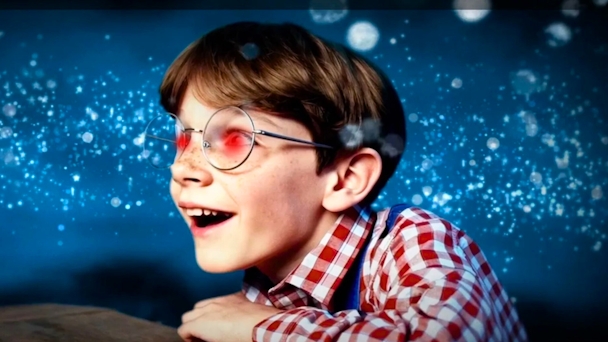Collaborate or retaliate? How should adland ‘storytellers’ react to Gen AI invasion
As 2025 approaches, spare a thought for advertising’s storytellers who will be commanded to “embrace” Gen AI in 2025. Can these experimental tools be wielded with vision, or is this ailing industry chasing yet another tech MacGuffin? John McCarthy explores.

I have long been skeptical about adland’s insistence it is in the storytelling business, suffering many an advertising sage insisting they share a profession with the prophets of yore, spinning yarns to win hearts and minds. So, it’s weird now that I am now on the side of these creatives. In fact, I miss those conversations I used to roll my eyes at.
Can ads be art? Most aren’t, but the best ones are.
I’m just a guy who writes about ads. But I pick up on trends in the creation of the most exciting work, or I guess in normal human talk, work human beings will pay attention to once and tolerate a few times.
These ads are constructed with single-mindedness and an anal retentiveness. The work is protected in infancy from the prying emails of concerned stakeholders. They cannot teach grandma how to suck eggs. Anyway, it is easier to move audiences with one vision than many. One voice is easier to make out than a crowd.
And that’s where Gen AI comes in.
I get why it would excite shareholders who grudge their talent the recompense for their market-leading labor.
I get why it would excite the people creating and selling the technology (although they’re prone to hyperbole web3, crypto, metaverse, a programmatic advertising industry we’re still trying to unravel).
I get why being able to generate ‘art’ would excite people who can’t create art.
And I get why the allure would appeal to staff who are required to create an endless flood of ‘assets’ or ‘content’ for an internet where everyone must create and never be heard.
But can you be a storyteller if you use Gen AI?
Now I know some of you are, and do. Concratulations, your labor just went right up in value. And you may see me as a scribe rallying against the satanic technologies of the Guggenheim press. And then there’s the tradesman blaming their tools mentality.
Well, forget all that. It simply comes back to intentionality.
The scribe might stand by the power of penmanship despite it being slower. It might be an emotional attachment to the process, regardless of the output, or fear that it will make a product they care about worse.
But that is not what is happening here.
Using Gen AI, the storyteller loses control. And the authorial voice becomes an authorial suggestion. Intentionality gets worn down. You’re rolling a dice.
From the text perspective, today’s GPTs read your brief and approximate a median of the most probable internet words. Journalists like me also call that plagiarism. Shabby vague plagiarism. But that insight, if there is any, is coming from somewhere. I also don’t think a good storyteller is someone who assembles a story running the most probable internet word combinations through an algorithmic sieve. In fact, I think that makes a good storyteller a little bit sick.
But sick aside, I also get ill when I think about the huge pile of stories never told. And that is where my stance softens.
I’ve lost many a project to scope and my inability to provide assets, characters and worlds. Or hit deadlines. Or push through hangovers...
One of my favorite TVCs this year came from Audible and Fold7. Gen AI storyboarding helped the team develop worlds they may never have had the hours to create. The thing is, the Gen AI art was the starting point, not the endpoint. And it was wielded by someone who can tell art from fart. It wasn’t a ‘John Lennon as a Game of Thrones character? Cool, that’s the ad now’ scenario.
Not long after, VCCP’s AI creative agency Faith made a film to celebrate its first birthday. Morten Legarth and Ben Hopkins, Gen AI wizards, helped broaden my understanding of the tech’s limitations today, and you’ll forgive me for leaning on their words for a bit.
“Pure AI solutions, which look like silver bullets, still need human intervention. Generative video models are probabilistic… non-deterministic… and inherently random. The complexity of training for consistency far surpasses that of static-gen AI imagery, a fundamental limitation often overlooked. And no one hates inconsistency more than brand world builders. This chaos, which undermines a creative vision, limits generative video to conveniently quirky music videos, retro movie trailers and novelty, sub-par TV spots - a reality that only sinks in when you realize that using tools such as Midjourney feels like playing slots in Vegas – spinning again and again, waiting for the jackpot.”
They generated an amazing video called Finding Faith using 15 tools to “bring order to the chaos.” I get the impression that using the AI in such a full-funnel manner required more expertise, not less. But for their labor, they reckon: “Yes, we cut production time in half and costs by around 85%.”

Halving the costs of production and being 15% faster at the very minimum? I’d bite your hand off for that in my line of work if I could ensure the quality and intentionality of the output. I’d bite your hand off for 1%.
I look forward to seeing more work from this team. If they can’t weave these processes together into coherent work that works for clients, no one will. And we’ll probably find out in 2025.
Maybe we are solving the wrong issue.
I don’t get the impression the ad world’s problem is that it needs to create more work faster. Probably the opposite. Especially with organic reach plummeting on most channels I could care to name.
And if your industry is based on billing clients for access to talent, that you subsequently suggest can be outpunched by a couple of software, you are sort of shooting yourselves in the foot yeah?
But if Gen AI can give the talent more time to think and develop content strategies, I’ll start to get behind it.
We are seeing a lot more AI ads out there, be it Google’s ‘Dear Sydney,’ which suggested a young girl should generate fan mail to an Olympian, or Coca-Cola’s lifeless AI Christmas ad that Campaign thinks is a Turkey and System1 believes worked with real people.
These newer ads might not be as ugly as Toys R Us’s Sora effort, but I am still seeing some that are just short vignettes of uncanny people in rooms holding product. There are not good ads, regardless of how they are made. Is AI making it easier to make bad ads in that case? The stories the storytellers don’t want to tell.
And you’d like to think that Coca-Cola would kneel at the altar of the storytellers because, without the red, the Santa, the good times and its imprint on culture, it’s just plastic-encased carbonated sugar water from a time when its main competitors were dirty well water and tins of beans.
But maybe the storytellers have already lost. Pandora’s box is opened. There is a tech arms race in adland. It might be that adland has to put on a tech mask to attract that spend, regardless of whether it produces good work. Reacting to the merger of IPG and Omnicom, David Jones, CEO & co-founder of The Brand Tech Group, recently said: “It creates the world’s largest company in yesterday’s industry. Putting two big declining legacy companies together is unlikely to lead to one high-growth AI-first market leader. It’s a bit like going back in time and thinking that merging Kodak and Blockbuster together would lead to the world’s #1 internet or social media company.”
I might be holding a memorial for a trade that’s long left us.
Humankind’s strongest skill in the animal kingdom is that big brain, and the adaptability it provides. Gen AI is the market force driving an entire industry right now. In 2025, it will be interrupting your storytelling one way or another.
You will survive. Why not make AI do your dirty work. Why not win back those billable hours? Why not engage your big adaptable brain on the bigger problems and see where it takes you.
Or.
Well, the beancounters are going to want to hear that you are using Gen AI. Just tell them you are using it, spin a yarn and continue accordingly. If this is a fad, it will pass.
I cannot wait for 2025. The year we learn the end of this story.
